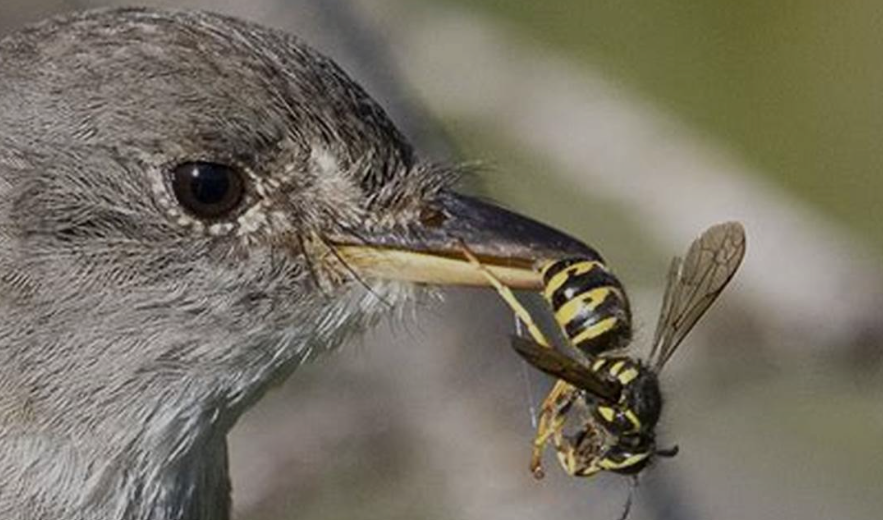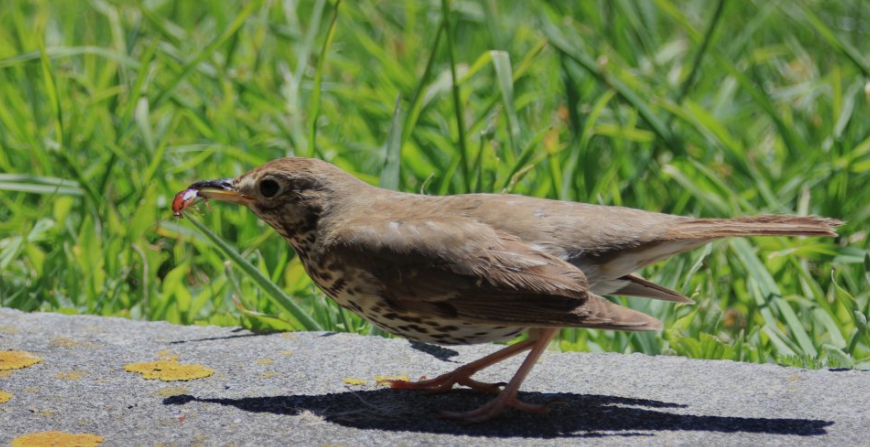
Some birds specialize in hunting flying insects, and wasps are part of their natural diet. These birds often use speed and agility to snatch wasps in mid-air, taking advantage of their flight skills to secure a protein-rich meal. For many species, this type of hunting is an important way to meet their high energy needs during migration or breeding.
Eating a stinging insect requires strategy. Some birds have developed clever techniques to avoid being harmed by their prey. For example, they may rub the wasp against a branch or hard surface to remove the stinger before swallowing it. Others focus on catching young or weakened individuals that pose less of a threat.
In certain cases, birds do not just target adult wasps but also raid their nests. By breaking open nests, they gain access to larvae, which are rich in protein and much safer to eat than full-grown wasps. This behavior not only provides nourishment but also reduces the number of wasps that survive to maturity.
Many insectivorous songbirds consume wasps incidentally while foraging for a variety of small prey. They may pluck them from leaves, flowers, or low vegetation, treating them no differently from beetles, flies, or caterpillars. Even if wasps are not their main food source, the opportunistic nature of these birds makes them important in keeping populations in check.
Larger omnivorous birds also play a role in wasp predation. These species are not as specialized in catching insects but will take advantage of the opportunity if wasps are abundant. Their strong bills and bold feeding habits allow them to eat prey that smaller or more cautious birds might avoid.

Birds That Eat Wasps
Bee-eaters
As their name suggests, bee-eaters specialize in catching flying insects, including bees and wasps. They skillfully remove the stinger by rubbing the insect against a hard surface before eating it.
Purple Martins
These large swallows feed almost entirely on flying insects. They swoop through the air catching wasps, flies, and beetles, making them excellent natural pest controllers.
Eastern Kingbirds
Eastern Kingbirds are agile fliers that consume a wide variety of flying insects. Wasps are a regular part of their diet, which they capture mid-air with precision.
Great Crested Flycatchers
These birds often hunt from perches, darting out to snatch insects in flight. They readily eat wasps and are known to remove stingers before swallowing.
Barn Swallows
Barn Swallows feed on insects while flying at high speed. They consume many different flying species, including wasps, which they catch effortlessly on the wing.
Bluebirds
Though often thought of as insect generalists, bluebirds also take wasps when available. They typically hunt from low perches, swooping down on insects in open spaces.
European Robins
In addition to worms and beetles, robins will consume wasps during warm months when insect populations are high. They mostly catch them near the ground or in low vegetation.
Tanagers
Some tanager species are known to eat wasps, along with bees and other insects. Their strong bills allow them to handle a variety of prey, including stinging insects.
Woodpeckers
Certain woodpeckers dig into wasp nests to feed on larvae. This gives them access to protein-rich food while also controlling wasp populations around trees and wooden structures.
Sparrows
Though primarily seed eaters, sparrows sometimes eat insects, including wasps. This usually happens during breeding season when they need more protein.
Warblers
Insect-eating warblers feed on many small invertebrates, including wasps. They are quick and agile, picking them from leaves or catching them in the air.
Shrikes
Shrikes are predatory songbirds that eat a wide variety of insects and small animals. They are bold enough to catch and eat wasps, sometimes impaling them on thorns to handle them more easily.
Flycatchers (other species)
Beyond kingbirds and crested flycatchers, many flycatchers actively pursue wasps in mid-air. Their quick reflexes and aerial hunting style make them efficient predators of flying insects.
Thrushes
Several thrush species consume wasps along with beetles, caterpillars, and other insects. They usually catch them while foraging close to the ground or in low shrubs.
Jays
These intelligent and opportunistic birds are not picky eaters. Along with seeds and nuts, they will eat wasps, sometimes raiding nests to reach both adults and larvae.
Magpies
Like jays, magpies are opportunistic feeders. They occasionally attack wasp nests, feeding on the larvae inside. Their bold behavior allows them to handle food sources other birds avoid.
Crows
Crows are versatile omnivores and have been observed eating both adult wasps and their larvae. They sometimes pick apart nests to access the developing insects.
Wrens
Insectivorous wrens feed on a variety of small insects and spiders. They may eat wasps when foraging in bushes or around nests, especially when feeding young chicks.
Orioles
In addition to their love of fruit and nectar, orioles hunt insects. Wasps make up part of their protein-rich diet, especially during breeding season when they need to feed nestlings.
Starlings
Highly adaptable, starlings eat many insect species, including wasps. They may even raid nests for larvae, taking advantage of the concentrated protein source.
Swifts
These fast-flying birds feed exclusively on insects caught in the air. They consume wasps along with flies, beetles, and other airborne prey, often in large numbers.
Mockingbirds
Mockingbirds are omnivores that eat insects, fruits, and berries. Wasps are among the insects they catch, either in flight or from plants where the insects forage.
Rollers
Birds in the roller family, found in parts of Europe, Asia, and Africa, catch large flying insects such as wasps. They use powerful bills to crush their prey before swallowing.
Robber Bird Species (Butcherbirds)
Similar to shrikes, butcherbirds feed on insects, including wasps. They often kill and handle prey by impaling it, reducing the risk of being stung before eating.